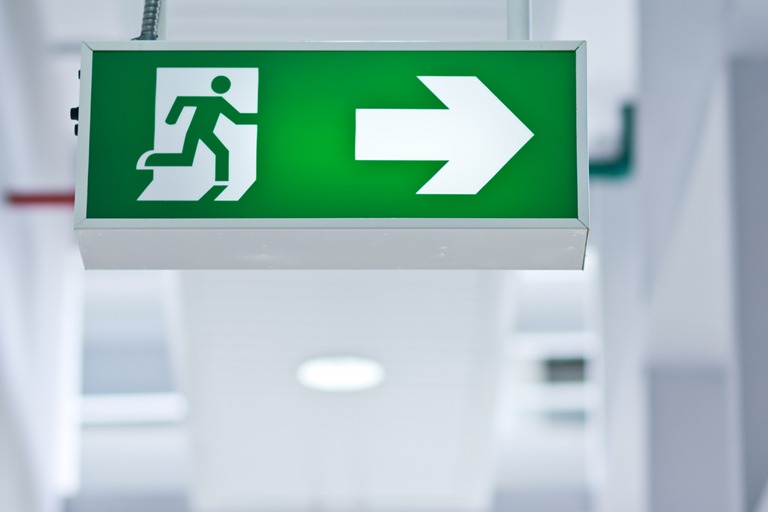FIRE ALARM SYSTEMS AND MONITORING – THE RIGHT WAY!
Commercial building fires can be extremely costly. With a properly monitored fire alarm system in accordance with CAN/ULC-S561, a building’s infrastructure can be salvaged millions in property damage prevented. A recent fire is Mississauga is an example of how extensive fire damage can be without an alarm system. The building was in construction and not occupied. Because of this, there was no code required sprinkler system and fire alarm system that would mitigate the spread and alert the fire services. The fire that broke out in the early evening hours spread and was difficult for firefighters to put out. As a result, the building was destroyed and had to be rebuilt, costing the construction company and their insurers millions in damages.
The High Price of Fire Damage!
Fire can be devastating to a property and its owners, causing thousands and sometimes millions of dollars to repair. Fire damage goes beyond the loss of furnishings and personal property. The things that can incur the most cost from a fire are:
Replacing Property: Property damage is the most obvious cost of fire damage. Demolition of the entire building is required when the structural integrity is compromised. This can be a devastating loss for property owners that means reconstruction costs and loss of profits during reconstruction.
Smoke and Water Damage: A big contributor to reconstruction costs after a fire are smoke and water damage. Containing a fire in one area is simpler than containing smoke. It can very quickly and move around cracks and corners. Water from putting out the fire can flow through ceilings and walls damaged by fire into areas otherwise unaffected. Left untreated, mold can develop, posing a health risk to residents.
Reconstruction Costs: Reconstruction costs must cover, materials, labor, and equipment needed to rebuild. With an apartment building fire, demolishing and reconstructing from the ground up means hours of worker labor and equipment such as bulldozers and cranes.
The Right Fire Alarm System for Your Building!
Everyone dreads that call that their building or home is on fire. When the worst happens, knowing your family, employees or tenants are safe is all that matters. Once the fire is extinguished, building owners will be faced with renovation or reconstruction costs! However, after a fire building owners should seriously consider upgrading their fire safety system. Here are some things to think about:
Code Compliance: Finding the right alarm system for your commercial or industrial building is not a job for the building owner, nor is it a job for a fire alarm contractor or burglar alarm company. The Ontario Building Code specifies minimum of detection and signalling capabilities. The design of a fire alarm system should be left to a firm that is qualified and knowledgeable in fire detection. Fire suppression sprinkler systems can be both a fire detection system and an extinguishing system. Unlike the movies, the only sprinkler heads that spray water are those affected by excessive temperatures! Fire safety systems in commercial and industrial buildings require a building permit and an electrical inspection permit. Registered professional engineers are required to insure that the systems are designed correctly. A home alarm system needs to have smoke and/or heat detectors on every floor, in bedrooms and kitchens where fires are prone to start.
Monitoring: By the time smoke detectors go off, the fire damage has begun. That’s where monitoring can benefit. In many cases thd Building Code and the Fire Code require that buildings be monitored in accordance with CAN/ULC-S561, A National Standard of Canada. Round the clock monitoring can alert the Fire Service and an owner that there’s a fire. This is helpful for buildings and construction sites that are often unoccupied for extended periods of time. In a fire situation seconds are precious and monitoring can give the Fire Service the minutes they need to knock down the fire and save millions in damages.
Regular Testing and Inspections: While installing monitoring systems and alarms to meet code are standard practice, regular testing and inspection of these systems are critical to fire safety. Fire alarm and monitoring systems should be tested annually, while sprinkler supervision systems are tested every two months. In residential installations smoke alarms should be changed every ten years and carbon monoxide detectors should be replaced every five years.
Fire alarm systems are the first line of defense in protecting people and property from injury. They can alert occupants of a fire in time to vacate safely and officials in time to minimize damage. By employing a qualified fire alarm servicing company and Damar Security Systems for the monitoring of the system you can be assured that the fire detection and suppression systems are operational at all time. Making fire safety decisions to your protect your property is an investment you can feel confident about.



